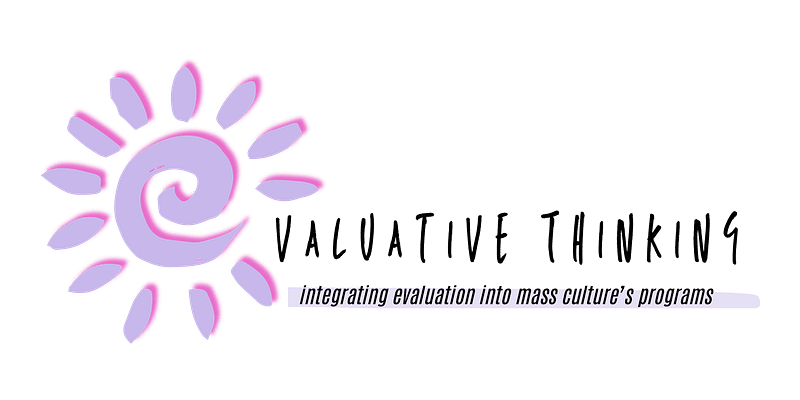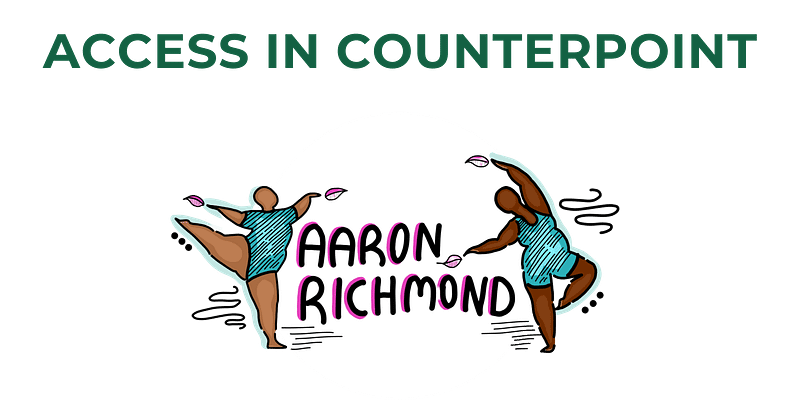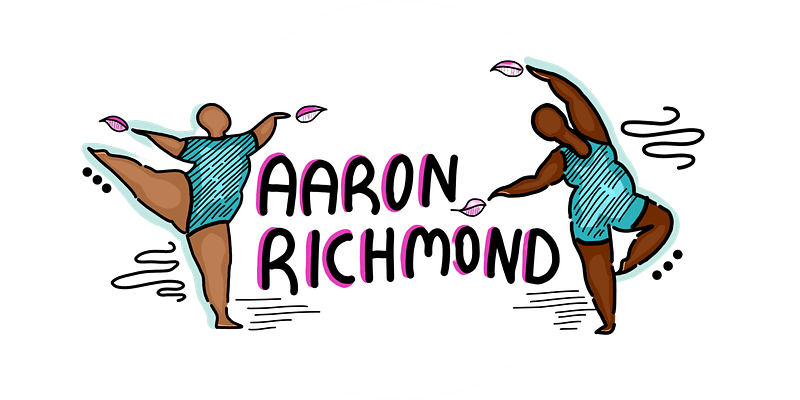
About a year ago I was approached by Mass Culture to work with researcher Aaron Richmond on his new framework Access in Counterpoint. I was excited by the framework as Aaron had articulated many of the things that I see and experience when working with arts organizations who are welcoming Disabled audiences into their work, and eventually, incorporating Disabled artists into the creative process. The pairings that spoke to me most were (in this order): integration & intimacy; functional & aesthetic; and creation & reception.

Aaron and I met and discussed the framework as well as Disability arts in general and began discussing ways in which the framework could be applied. During these early conversations it became apparent that for me, access work is about finding the edge and exploring ways in which we can push or ease ourselves past it – working towards discovering a new edge and forever expanding our ideas of artistic work, its expression and presentation. We decided that the framework could definitely help organizations to do this – but how? Would people understand that the counterpoints Aaron had articulated could be used in various ways and/or could be a diving board for their own edge finding?
Throughout my time working with Aaron I was also working with several companies on developing Relaxed Performances of their work. We decided to apply the framework and the idea of finding the edge to the companies I was engaged with by using it as a type of dramaturgical tool that the companies (or any company) could use to gauge their own access journey. We came up with three conversations to do this:
Conversation 1 – Mapping of the organization’s accessibility ecosystem, including how I was brought in to work with them; a big picture analysis of what each company was already doing for access.
Conversation 2 – Hotspots: what are the tensions and meaningful contact in the organization’s access work; what pushes it forward and what drags It back?
Conversation 3 – Finding the edge: what would be the conversation/ practice/event/thing that would push access at the organization further?
Having these three conversations is where our work started to falter, or rather where it showed us the edges. What I found was that in this work people are nervous to make sure they do things right – yes, thank you! But that that nervousness can be what creates the edge, and holds people back from even attempting access work. So Aaron and I decided that in my unique position as an outsider looking in, perhaps I can answer the questions posed in our conversations – what would that look like? What answers or further questions might arise from these secondary conversations that we were having? Here is what we came up with.
Throughout my work as a Relaxed Performance and Accessibility Consultant I have observed that initially it is one person from a company who reaches out to me about access. These people are dedicated to equity and inclusion and want a more diverse audience to experience the work they are creating. They are committed to Disability access, but perhaps need a hand in making it possible in their companies. Sometimes they have already spent months speaking with their colleagues (or the administrative and creative teams) about access and why their company should begin this journey. For me, these are the people who can see the benefit of integration at a live performance (by providing a shared, intimate experience for all). Integration & Intimacy
A simple answer lies for conversation two, actually two simple answers – the funders and the existing audience. Can we get the funds needed to incorporate access into our presentations? What are the financial implications? Who is impacted (IATSE, Designers, Front of House, Artists etc. – all of these arts professionals will be impacted whether it is a photo shoot call for the Venue Guide, training for Front of House or the Creative team, coming onto stage early for a pre-show chat or introduction for the audience – all of this requires the funds to appropriately pay those involved)? And are the funders aware of the true costs of access? To be noted – I have never met a Designer, Actor, Musician or IATSE crew member who is not interested in providing an accessible experience for all audience members; it just takes time, their skills and the funds to pay them for this. We cannot expect these folks to work for free. Next – the existing audience. This is a variable. If we are talking about contemporary, community engaged, TYA or experimental arts, generally the audiences are willing to go on a journey with the company, but when we are talking about more “traditional” art forms where the audience may expect a certain presentation style and has been successfully trained to behave a certain way, this is where we begin to see a pull on the part of the company. The company may want to expand their audience and include Disabled audiences, but are worried about what their existing audience might say or how they might react. And not without reason, I have observed audience members who have had negative reactions to Relaxed Performances (thankfully this number has dwindled over the years as our society becomes more open), and I have in turn witnessed the company’s staff react to this negativity with grace and acceptance all the while championing accessibility (once a choice has been made to commit to access, the entire company inevitably comes on board – funding or no funding. This is a truly beautiful thing to see). Educating existing audiences about access can be a task – will we lose audience members; what does that mean to already dwindling funding sources and ticket sales? Using Relaxed Performances (stand alone events for many companies) can be like taking the temperature with an audience – perhaps your existing audience has been waiting for this, have you reached new audiences (always the goal), have you alienated your existing audience (never the goal, let’s change their minds and hearts, not their ticket buying power)? These are the very real concerns of companies when embarking on an access journey – like it or not funders and existing audiences play a huge role in accessibility. Creation & Reception
We are back to Finding the Edge. A phrase that now sits as a sticky note on my laptop. A phrase that guides me in this work. But what about our companies? What is it that can push us past a typical show/concert/ performance to Relaxed Performance or Deaf Interpreted work or Audio Description or work by Disabled artists or presentations where all of the above are baked right in (see the work of Erin Ball and Maxime Beauregard for examples of this done beautifully!)? What can advocates of accessibility do to make their arts organization take the next step in their access journey? What is that step? And will audiences go with them on this journey? The “edge” will be different for each and every arts organization out there. There is no one edge that is the same for everyone, for each company their journey is different and the outcome will be different because their edge is unique to them. Functional & Aesthetic
I think for me, this process has highlighted three major things – the need for more accessible arts experiences – whether as an audience member or a creative working on/in a performance; the need for education around access for funders and existing audiences; and that one champion within an arts organization who is committed to access and providing truly beautiful and wonderful arts experiences to all people. I feel that the framework that Aaron has created can be applied by any company when they use the three conversations with it; the framework allows companies to customize it for their specific needs and their work. I do believe that it will help people assess where they are on their access journey and can empower them to go further – to find their edge.

